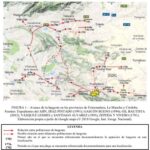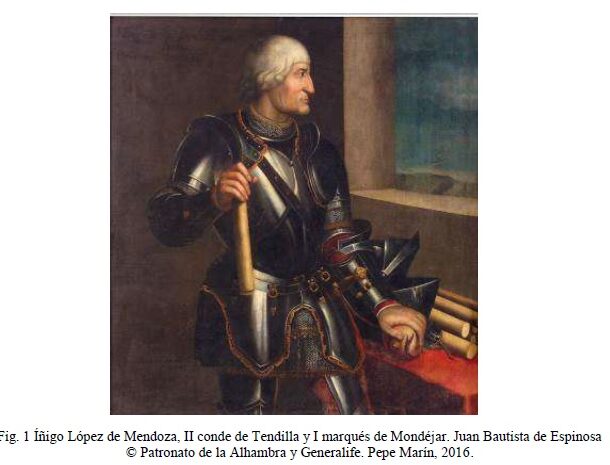Locust infestations were a major concern in the primary sector during the Modern Age. In an agricultural economy, where the possibilities of growth and development were linked to the production of the harvest, the total or partial loss of the crop caused considerable devastation, or even death by starvation. How were these pests formed and how did they move through the different localities and fields? The author hypothesises that these invertebrates underwent frequent changes in their phenotypes, which led them to change their behaviour, far from their usual solitary behaviour, and to become pests in search of food. The resource shows the advance of the locust in the provinces of La Mancha, Extremadura and Cordoba at the end of the 18th century. Coming from La Mancha, the invertebrate followed its apparent usual south-north direction, passing through Almadén, branching off towards Trujillo and Guadalupe in Extremadura to, on the one hand, head towards Plasencia in 1781, while on the other hand turning towards Talavera de la Reina and Toledo. The plagues began to subside from 1783 onwards and ceased in 1785, when the swarms were dissolved due to climatic and human causes.
Collection: Images
Project: 2. Social and economic impact of technological revolutions in Europe.
Chronology: XVIII
Scope: Secondary Education, Baccalaureate, University
Link: http://www.tiemposmodernos.org/tm3/index.php/tm/article/view/5388/876
Resource type: Image
Format: Map
Source: Muñoz Pertierra, J. M. (2019). "Evolución cronológica y grográfica de las infestaciones de langosta en la España peninsular a fines del siglo XVIII. La plaga de 1776-1783", en Tiempos Modernos, nº 39, p. 249.
Language: Spanish
Date: 2019
Owner: Pablo Ballesta Fernández (Modernalia)
Copyright: ©Tiempos Modernos ©Jesús María Muñoz Pertierra
Abstract: The path of a grassland invasion in the central peninsula
Image
Tags






